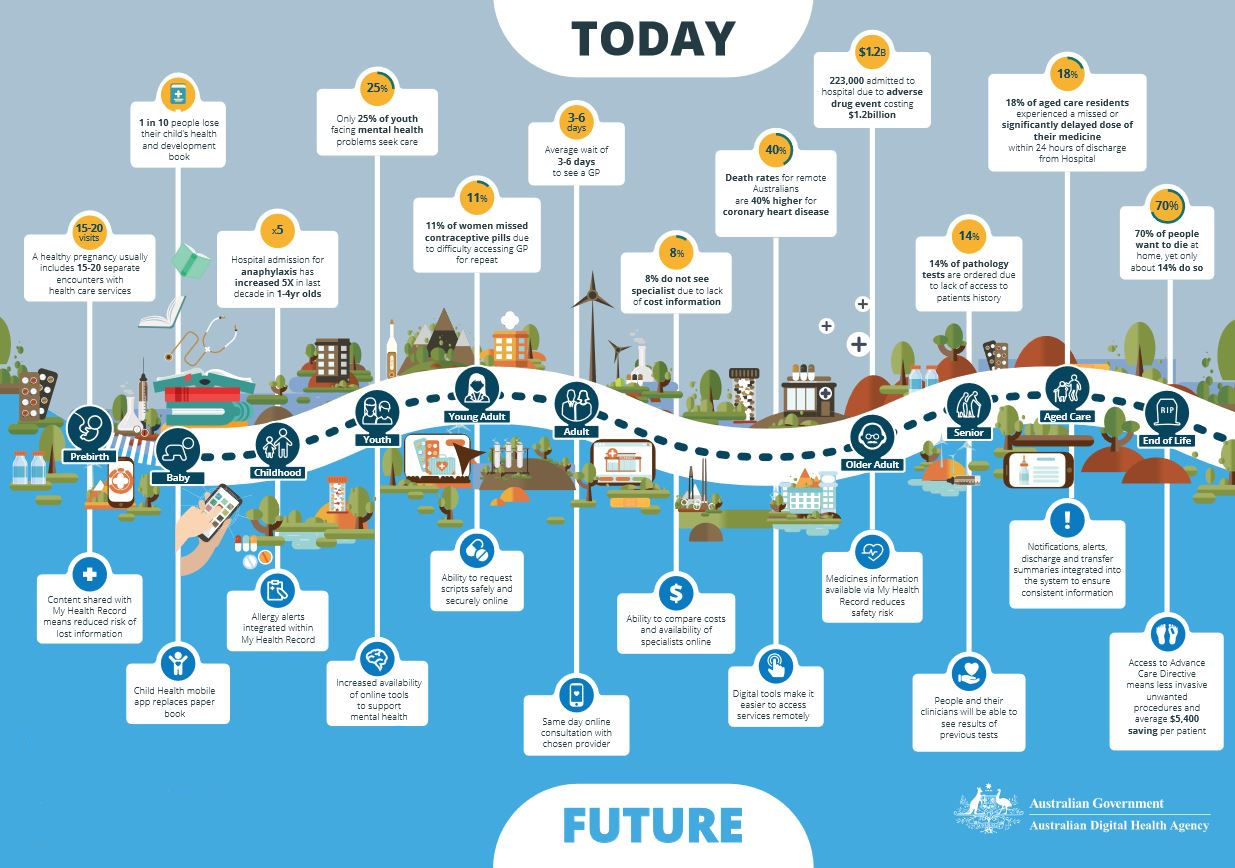How future-proofing our healthcare system will save lives
Our healthcare system has the most to gain from digital transformation. Detailed patient records, telehealth services and online script approvals can improve the lives of thousands of Queenslanders overnight.
But it’s also one of the slowest industries to catch on to the fourth industrial revolution (4IR). Privacy concerns, quality of patient care and the ability to secure Medicare approval have slowed down the rate of clinicians able to take advantage of digital health technologies.
But this all changed once COVID-19 arrived. Health practitioners had to use video consultations to keep in touch with their patients during lockdown and Australians needed a simple set of tools to access the healthcare they needed online.
Digital health isn’t new if you live in regional Queensland. Chances are if you were discharged from hospital into a regional community, a specialist may have kept in touch via video link. But digital healthcare goes much further than video consultations, it’s about getting the right treatment when you need it most.
The Australian Digital Health Agency, tasked with rolling-out the federal government’s National Digital Health Strategy, sums up the impact these technologies have on a person’s life in this visual timeline.
Like we’ve seen during other major disruptions caused by 4IR, there’s always a small group of individuals or “early adopters” who lead the pack until a tipping point is reached. Clinicians and small businesses in Mackay are some of the early adopters leading regional Queensland with the introduction of electronic health records for our hospitals and allied health services.
SOURCE: Australian Government’s Digital Health Agency 2017 (to read the full report click here)
The Mackay Base Hospital was one of the first regional hospitals in the state where, from the moment you’re admitted, a full electronic health record is made available. Every patient now has a unique barcode on their armband that allows doctors and nurses to pull up allergy notes, surgical histories, pathology tests, vital sign observation and other critical health data once scanned.
Health data can now be easily shared between hospitals across the state, giving regional Queenslanders the confidence they need to seek medical services when it matters. Instead of having a person’s medical record kept in a paper file at one location, specialists between hospitals can now access electronic records stored on secured servers.
Electronic health records also save health care workers time on data entry and clerical work, giving them more time to focus on treating patients and their families.
Electronic health records are just one way digital technologies are improving the quality of healthcare. Some of the most significant changes we’ve seen in the industry are in the emerging field of telehealth, bringing health workers closer to the community than ever before.
The future of healthcare is in people’s homes. Regular checkups for at-risk patients, physiotherapy for rehabilitation patients, daily nursing support and pathology samples collection are just some of the services that are currently being delivered in people’s homes.
But there are still some major obstacles to harnessing the full potential of digital health. An ageing population, closing the gap between our Indigenous communities, improving digital literacy and ensuring digital connectivity to our more remote residents are some of the major challenges that must be addressed.
While there are not many upsides to the COVID-19 crisis, it will encourage decision and policy makers to consider reform to the health system that’s compatible with digital technology.
One that provides more targeted and patient-centred care, one that improves the allocation of resources and one that engages patients and their families in the use of managed devices and applications.
If you’re interested in learning about our state’s digital health strategy, you can read the Queensland Government’s vision for 2026 through this link.

